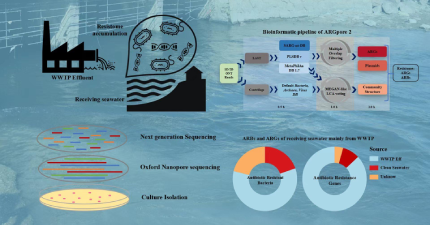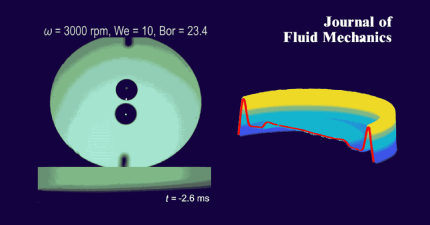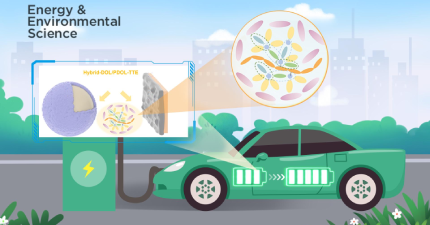SUSTech undergrad finds new approach to bone regeneration with some Chinese herbs
Oct 12, 2019
Bone regeneration has been an important topic in clinical research. Previous related studies have focused mainly on promoting the proliferation of corresponding osteoblasts or inhibiting the growth of osteoclasts. However, bone regeneration is a multi-factorial, complex process in which other cells, like macrophages or stem cells, play an essential role. Therefore, a new generation of bone defects repair materials should not only be functionalized with osteogenesis but also coordinate immunomodulation.
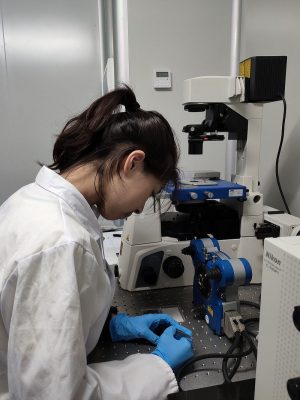
Recently, Deng Yuqing (Class of 2020) from the research group of Associate Professor Tang Bin within the Department of Biomedical Engineering (BME) at Southern University of Science and Technology (SUSTech), has published a research paper in an internationally renowned journal International Journal of Biological Macromolecules (IF 4.784, JCR Q1), after receiving a patent for their research.
Prof. Tang’s group has long been engaged in orthopedic biomechanics research. The fabrication of Strontium Eucommia ulmoides polysaccharides (EUP-Sr) is based on the results of previous biomechanical research and is an attempt of mechanomedicine.
As a treasure of the Chinese, traditional Chinese medicine has many health functions. Eucommia ulmoides, or as it is traditionally known “duzhong”, has been used for thousands of years in China with the main function of enhancing bone. Besides, modern scientific research proved that strontium (Sr) is a trace element contained in the human body that inhibits inflammation and promotes bone growth. Considering these, we introduced Sr into EUP and fabricated a novel Chinese-Western complex, EUP-Sr, which is expected to be with favorable osteoimmunomodulatory properties in triggering a desired immune response and potentially supports the bone healing process.
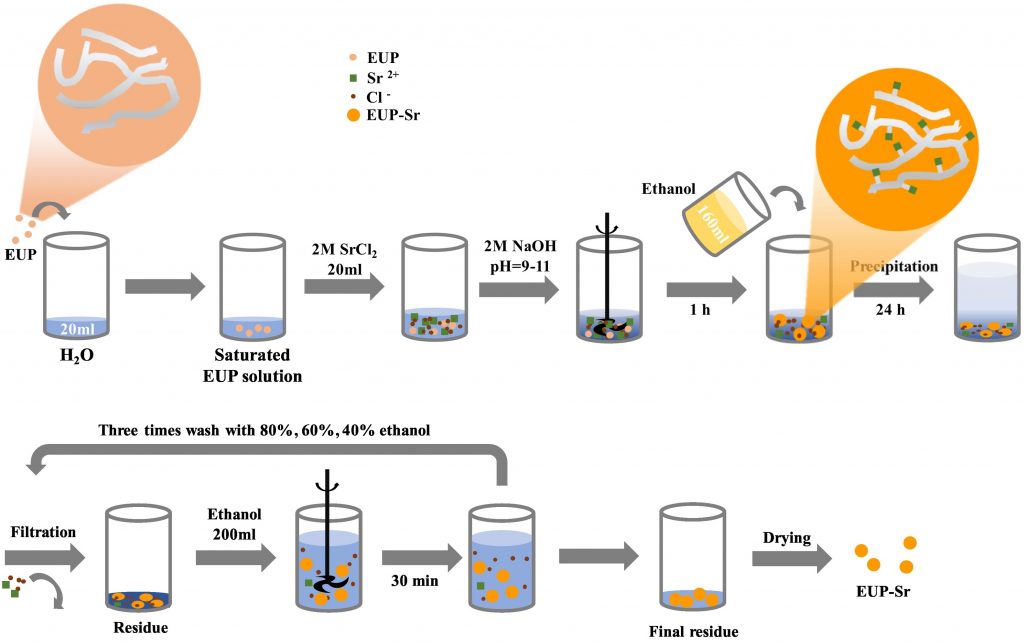
Flow chart for fabrication of EUP-Sr
The results confirmed that Sr was successfully introduced into the EUP and formed a new complex with thermal-stable property. Furthermore, FTIR result confirmed the forming of a coordinate bond between the hydroxyl group in the polysaccharide and strontium during the complex reaction. The cytocompatibility and gene expression evaluation revealed of macrophage revealed that EUP-Sr could not only beneficial to the proliferation of macrophage but also suppress the expression level of inflammatory factors IL1β and IL18 while enhancing the expressions of osteogenic factors BMP6 and Wnt10b.

Results of materials characterization, cell proliferation and gene expressions
In this research, the incorporation Sr renders EUP with a better anti-inflammatory effect and creates positive effects in inhibiting the inflammatory responses of macrophages. Thus, Deng Yuqing believes that EUP-Sr could be a promising immunomodulatory bone repair candidate designed for improved bone regeneration.
This study is financially supported by the National Natural Science Foundation of China (NNSFC), Guangdong Foundation of Science and Technology, Shenzhen Science, Technology and Innovation Commission.
Original article: https://www.sciencedirect.com/science/article/pii/S0141813019347956
Latest News
Related News




